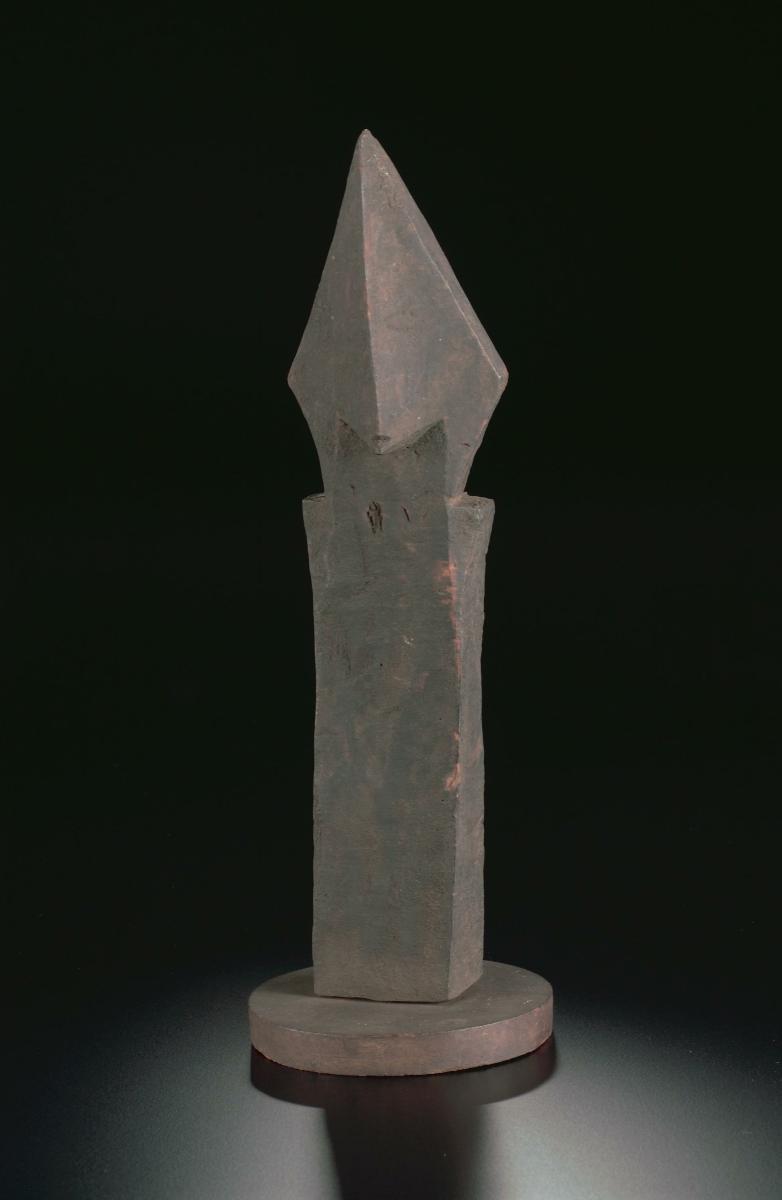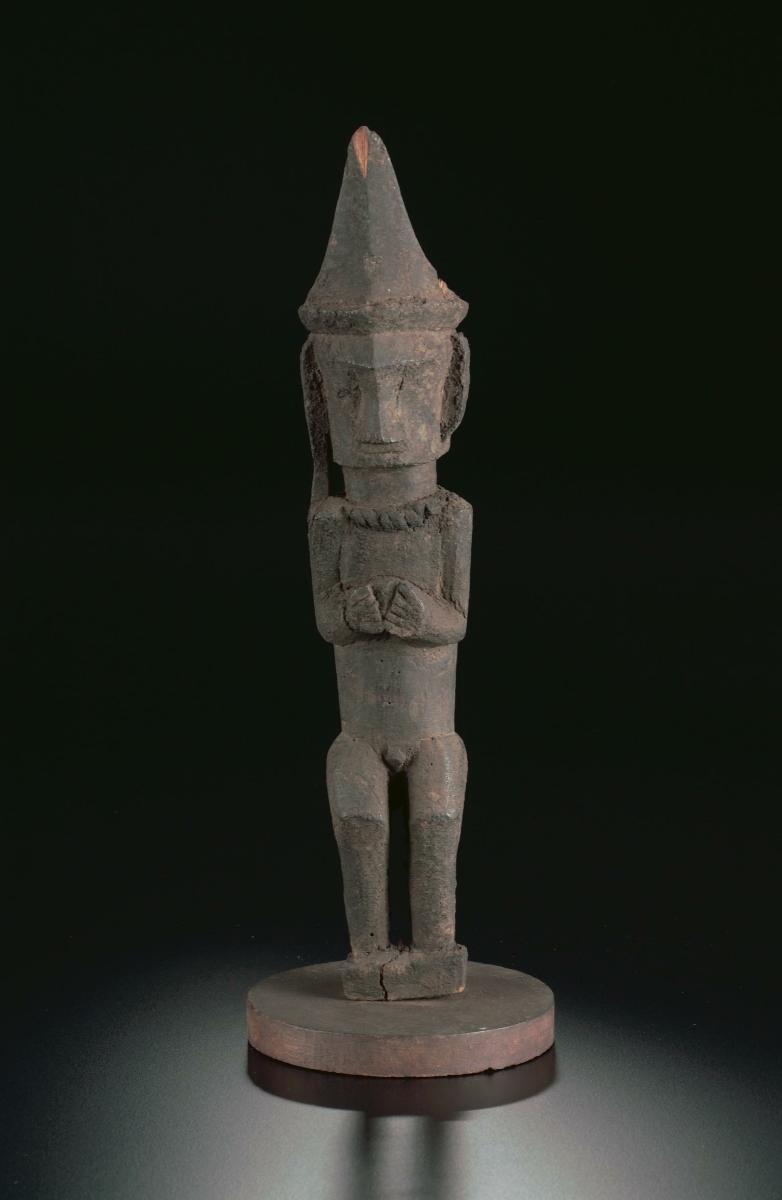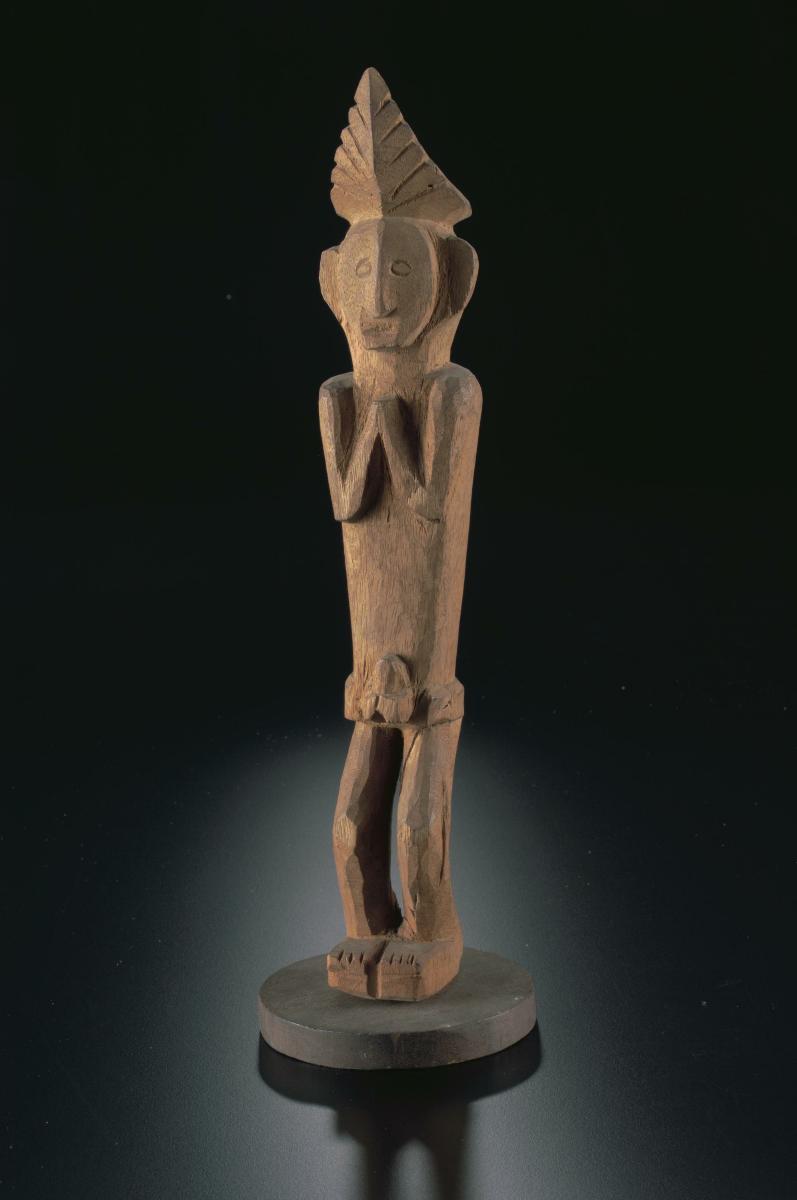This highly stylised ancestral carving is known as 'adu zatua'. 'Adu' means 'image' or 'carving' and 'zatua' means 'elder'. The term literally translates to 'ancestor carvings'. Ancestral carvings of southern Nias can be highly realistic or simplified or to be an abstract form like this carving. Armless standing figures are quite common, especially in southeast Nias and the nearby Batu Islands. It is believed when a family family member dies, a new image is made and lashed with the other ancestor figures to the right wall of the main room of the house. When necessary, another row is begun, and these may continue onto the upper part of the back wall of the communal room. These wooden carvings are thought of as containers for ancestral spirits. They are also thought to represent unborn offspring.















